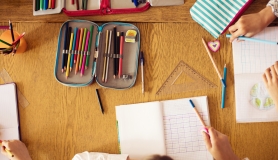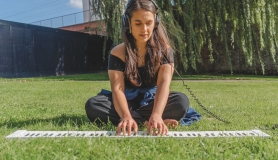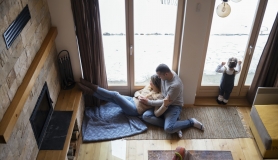If you ask most school children what is their favourite aspect of school, they say breaktime. When children spend time outside where they can run, jump, climb, swing, swim, and play, they eat better, sleep better and are happier. We all know that children thrive in the outdoors. Yet we often forget how much the environment can affect a child’s mood and behavior. When children spend too much time inside breathing stale air, hearing the hum of all the lights, electrical appliances, and the television, surrounded by synthetic fabrics, playing with plastic toys, eating foods that contain artificial coloring and preservatives, they get cranky and disagreeable.
Bonsai Teachings
Our environment affects us all and we all have different sensitivities but children do not have the filters that most adults have acquired. Children absorb all the sights, sounds, smell, textures and emotions around them. Environments that meet adult needs or that adults can tolerate often feel very different to children. The philosophy that “it’s a cold, cruel world out there and children may as well get used to it right now” is completely counter-productive to raising children to be as whole, healthy, and resilient as possible. The author, educator, and one of my personal heroes, John Holt, compared human beings to bonsai trees. If you take a tree seedling and clip its roots and branches in a certain way and limit its supply of water, air and sun you can produce a tiny, twisted tree. A bonsai tree is a deformed miniature of the tall, straight tree the seedling had the potential to be had it been given the sun, air, water, soil and food it needed. And so it is with children. They cannot realize their potential if they are given only a limited supply of the things they need to thrive.
Listening to Behaviour
Children have very little control over their environment. They must depend on us to keep them safe and to meet their basic physical needs. They must also depend on us to do our best to provide for them the most nurturing physical and emotional environment possible. When a child’s environment is not meeting his needs or is causing stress he may not be able to identify those needs or stresses let alone communicate them with words. Children communicate their stress and their needs through their behaviour. A child’s behaviour is always telling us something. Acting out behaviour is usually a call for help, such as “I’m over-stimulated” or “I need to space to move around.” When we tell a child to “stop behaving that way” what they may hear is “stop trying to tell me what’s wrong or what you need”. My many years of experience of being with many children has taught me that when we take the time to try to figure out what their behavior is telling us, looking at their environment is a useful place to begin.
Changing Environment
If a child melts down at the grocery store when you tell her she may not have sweets, is her behaviour manipulation or is it a communication that she can’t handle disappointment on top of sensory overload from the fluorescent lights and the hum of the refrigeration units? If a child continues to climb over the back of the couch when you have repeatedly told him to stop, is the child trying to get the attention he needs or is he expressing his body’s need for something appropriate to climb on? How will we know when a child’s behaviour is a communication of a stress or an unmet need related to the environment? When we look at a child’s environment to try to figure out what might be causing his behaviour we need to consider every part of it. The air children breathe, the light they see by, the words and sounds they hear, the food they eat, the water they drink, the feel of the clothes they wear, the things they play with, and the attitudes and emotions of the people around them all affect how they grow, develop, think, feel and behave.
Sowing the Seeds
There is considerable research that confirms when children are given what they need to build a solid foundation in the early years they have more strength to deal with whatever comes their way later. The best analogy I have ever heard about fully meeting children’s early needs is that children are like seedlings. When we raise seedlings in a greenhouse, in rich soil with good drainage and provide them the right amount of water and sunlight, and protect them from the wind, they grow deep roots and sturdy stocks. When it’s time to transplant them out into the world they will be not only hardy enough to survive, but vigorous enough to thrive. Children are not that different from seedlings. If we want them to develop deep roots and sturdy stocks so that they will be hardy enough to survive and vigorous enough to thrive, we must make their home their greenhouse. The family must be a rich soil that nourishes them. We must provide them with the water of our love, the sunshine of our attention and our protection from the winds of stress that weaken them.
Time to Explore
Providing our children with nurturing environments is more of a challenge in today’s world than it has ever been. Many children do not live in homes with gardens to explore or in neighbourhoods where they can spend hours playing outside. Even the children who do live in such places often have so many scheduled activities that they have very little time to spend outdoors. Many children are spending more of their time inside buildings than outdoors at earlier and earlier ages. Once children are in school, unless they participate in outdoor sports, they spend most of their time inside. Television and computer games have become like weeds in the garden. They quickly fill up the empty places in our children’s lives. Left unchecked they use up the energy and time children need for healthy growth and development.
Nurture and Protect
Just as children have very little control over their environment, there are many things parents have very little control over in our world environment. None of us alone have the power to end all the crime, violence, hunger, pollution, and injustice in the world. Every day when we step outside our door it is still going to be out there. What we do have the power to do is to create home, school and community environments that nurture and protect our children’s potential. To do this might require us to make some changes. Many parents already feel stretched to their limit trying to juggle earning a living and just making sure their children are in safe environments. We may think we don’t have the time or the energy to make the changes we would need to make to create more nurturing environments.
Planning Spaces
Creating more nurturing environments will actually give us more time and more enjoyable time with our children. Struggling with children’s unmet- need behaviors is time consuming and tiring. The more time children spend in environments that nurture them the more delightful they are to be with. The few hours we spend putting up a hammock in the garden will give us back many hours of joy and comfort, hanging out in the hammock, telling and reading stories, cuddling and watching the clouds go by together. Creating more nurturing spaces will look different for every family depending on what they have to work with. The size doesn’t matter. Even small changes can make a big difference in our children’s lives. Whether we plant a big garden full of flowers or put little pots of herbs on the front step, seeing and smelling those plants will nurture everyone in the family every time we walk by them.
So, how do we create more nurturing environments for children? I spent months researching this idea and a great deal of time and energy creating a more nurturing environment for the child in me and for the children in my life. In my article, Home Sweet Home, I share with you all the best resources and ideas I found and used for creating more nurturing environments for children.
USEFUL RESOURCES
connectionparenting.com
Tips for creating a nurturing environment
CHOOSE NATURAL Where possible look for items from nature rather than manmade objects. Playthings from the natural world offer many more opportunities for exploration.
REDUCE ELECTRONICS Cover the TV with a cloth when not in use, or do without one all together.
INVOLVE THE FAMILY Encourage collaboration and teamwork for household chores and work. Hold a cleaning morning once a week and work together to cleanse your home.
CREATE CEREMONY Light a candle at dinner, sing a special song at bedtime, and celebrate the changing seasons.







